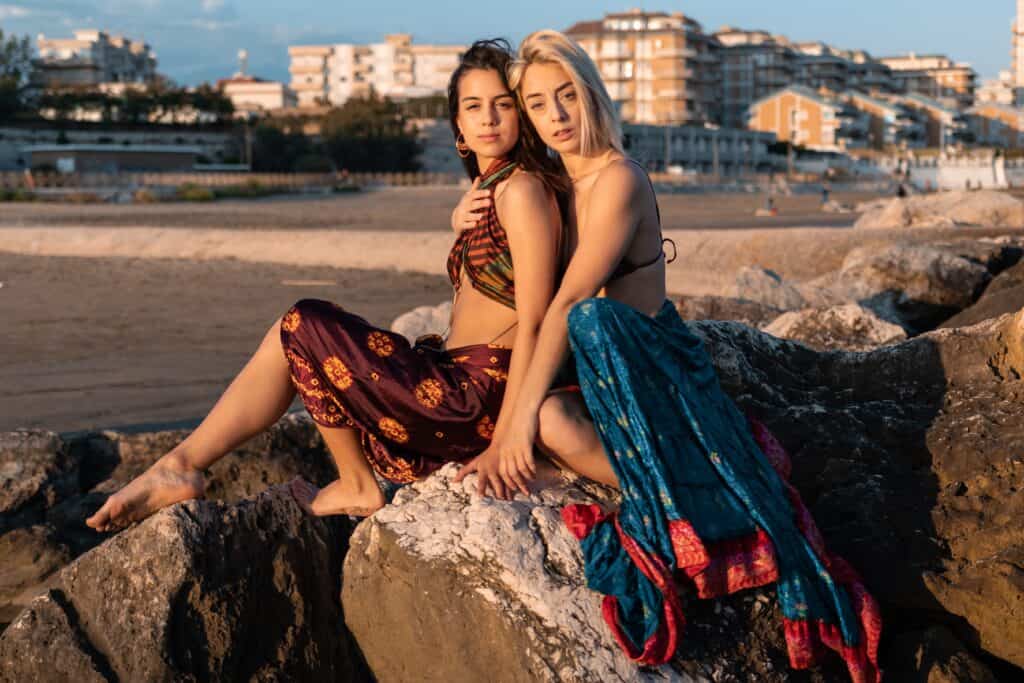Rayon vs cotton stand as two common options, each with unique qualities. Knowing what sets them apart helps you choose wisely. This guide explores five distinctions between rayon and cotton, offering clarity for your next purchase.
Short answer
Cotton wins for durability and easy care, while rayon excels in drape and elegance.
1. Source and Manufacturing: Natural vs. Regenerated
Cotton: A Natural Fiber
Cotton grows in the fluffy bolls of the cotton plant. Farmers harvest these bolls, which then get cleaned and spun into yarn. The yarn is woven or knitted into fabric. No chemical transformation alters its fundamental structure. Cotton remains a natural, biodegradable fiber. Its environmental impact, however, can be significant due to water use and pesticides in conventional farming.
Rayon: A Man-Made Cellulosic Fiber
Rayon begins with natural cellulose, often sourced from wood pulp. This pulp undergoes a chemical intensive process to become a soft, wearable fiber. The most common method is the viscose process, which uses chemicals like sodium hydroxide and carbon disulfide. Though derived from nature, its manufacturing is industrial. The resulting fiber is not synthetic, but regenerated.
- Key Difference: Cotton is a natural fiber. Rayon is a manufactured fiber made from regenerated cellulose.
2. Feel and Comfort: Softness and Drape
Cotton’s Comfort
Cotton greets the skin with a familiar, soft embrace. It feels gentle and breathable from the first wear. The fabric offers a comforting, consistent feel that many trust for daily use. Its texture is matte and humble.
Rayon’s Silk-Like Feel
Rayon boasts a luxuriously smooth and soft hand. It flows against the body with a graceful, fluid drape. The fabric often carries a subtle sheen, mimicking the elegance of silk. This makes it a favorite for garments that demand a graceful fall and a touch of sophistication.
- Key Difference: Cotton provides reliable, soft comfort. Rayon offers a silkier feel and elegant drape.
3. Moisture Absorption and Breathability
Cotton’s Absorbency
Cotton is wonderfully absorbent. It pulls moisture away from the skin efficiently. This quality makes it ideal for towels, bed linens, and summer clothing. Air passes through its natural fibers easily, promoting cooling breathability.
Rayon’s Absorption
Rayon shares a strong ability to absorb moisture. Some types can absorb even more than cotton. It helps keep the wearer dry by pulling sweat away quickly. The breathability of rayon depends on its weave, but it generally performs well in warm conditions.
- Key Difference: Both fabrics handle moisture well. Cotton is famously breathable. Rayon is highly absorbent.
4. Durability and Care: Maintenance Matters
Cotton’s Strength and Care
Cotton withstands rigorous use. It can handle machine washing and high temperatures. The fabric may wrinkle and shrink if not cared for properly. Ironing is often needed to restore a crisp look. With correct care, cotton items last for years.
Rayon’s Delicate Nature
Rayon becomes fragile when wet. It can lose nearly half its strength while saturated. This demands gentle hand washing or dry cleaning. The fabric is prone to shrinking and wrinkling. Ironing must be done on a low setting to avoid damage.
- Key Difference: Cotton is durable and easy to care for. Rayon is delicate and requires gentle maintenance.
5. Environmental Impact: A Complex Comparison
Cotton’s Eco-Profile
Cotton is biodegradable and renewable. Traditional farming methods, however, consume large amounts of water. Pesticides and insecticides are also commonly used, raising ecological concerns. Organic cotton presents a more sustainable alternative.
Rayon’s Sustainability Puzzle
Rayon comes from a renewable resource: trees. The manufacturing process, though, involves chemicals that can harm the environment if released. Newer, closed-loop methods (like those for Tencel™ Lyocell) recycle water and solvents, making some rayons more eco-friendly.
- Key Difference: Conventional cotton farming uses lots of water. Conventional rayon production can involve chemical pollution. Sustainable versions of both exist.
How to Choose Between Rayon and Cotton
Let your needs guide your choice. Consider the garment’s purpose and your lifestyle.
Choose Cotton For:
- Daily Wear: T-shirts, jeans, and undergarments.
- Hot Weather: Its breathability provides cooling comfort.
- Home Textiles: Towels and bedsheets that require absorbency.
- Easy Care: When you need machine-washable durability.
Choose Rayon For:
- Draping Garments: Flowing dresses, skirts, and scarves.
- Elegant Looks: Clothing that benefits from a soft sheen.
- Breathable Style: Lightweight, absorbent summer wear.
- Formal Attire: As an affordable alternative to silk.
Consider Blends!
Cotton-rayon blends merge the best of both worlds. They combine cotton’s strength with rayon’s soft drape. These blends are common and often easier to care for than pure rayon.
FAQ: Rayon vs Cotton
- Is rayon hotter than cotton to wear?
No, both are cool and suitable for warm weather. Rayon’s breathability depends on its weave. - Does rayon shrink more than cotton?
Yes, rayon is more prone to shrinkage if washed improperly. - Which wrinkles more, rayon or cotton?
Both wrinkle, but rayon often wrinkles more easily. - Is rayon cheaper than cotton?
Basic rayon is often less expensive than high-quality cotton, but premium rayons cost more. - Which is better for the environment, rayon or cotton?
Conventional versions of both have impacts. Choose organic cotton or certified Lyocell for sustainability. - Can you machine wash rayon?
Check the label. Many rayon items require hand washing or dry cleaning. - Is rayon a natural fabric?
It is not natural like cotton; it is a regenerated cellulose fiber. - Which is more durable, rayon or cotton?
Cotton is generally more durable, especially when wet. - Does rayon feel like cotton?
Rayon feels smoother and silkier than cotton. - Which is better for sensitive skin, rayon or cotton?
Cotton is usually the better choice for sensitive skin.
We specialize in customizing scarves, hats, clothing and accessories. Please feel free to contact us.



